Steamy Java 2012 Blog
Steam Tour Part 2
Updated 9 August
Steamy Java 2012
DVD (Details Later) |
Also blogging is tour leader Bernd Seiler. His blog is here.
Bernd's Steam Tour (final part) is planned to provide:
1 August - In the morning we’ll make a brief visit
to Kanigoro, where for several years now only one locomotive is
left in service. They also use a diesel locomotive for shunting in the
mill. The blue locomotives are used
in the yard with beautiful, large trees and, sometimes to bring trains
over the weigh bridge. Just around
the corner is the sugar mill Pagottan where we’ll probably see the
last active inside framed Luttermöller
locomotives in the world – and these are now fireless locomotives.
Of special interest is the level
crossing where it might be possible to get a locomotive and a horse cart
together in the same picture.
Pagottan is a Mecca for diesel enthusiasts too. The small diesels are
not strong enough for all duties
which is why you can sometimes see a double or even triple headed train.
In the afternoon we’ll continue to Rejosari. They use one loco in
shunting service in the yard. If the
unique geared locomotive “SALAK” no.10 is still serviceable
it’ll be steamed up for our group. Rejosari
also has a unique diesel locomotive and uses about two diesels in daily
service. The mill has several
interesting stationary steam engines inside the mill as well. Some of
the machinery in the mill is still
driven by steam powered transmissions. It’s always a challenge to
get admission to the mill (although we
have the paper from the headquarters. Hotel in Madiun.
Kanigoro had two locos on shed in steam and it appeared that No. 11 had just taken over the single steam duty from No. 6. In addition, one 4 wheel diesel, a tractor and cable were in use.
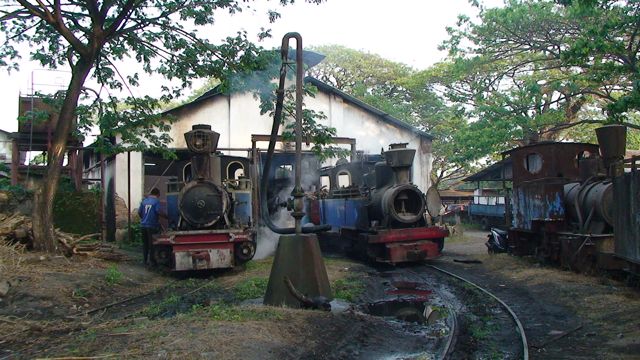
Morning shed shot before No. 11 (on the left) moved off to start work.
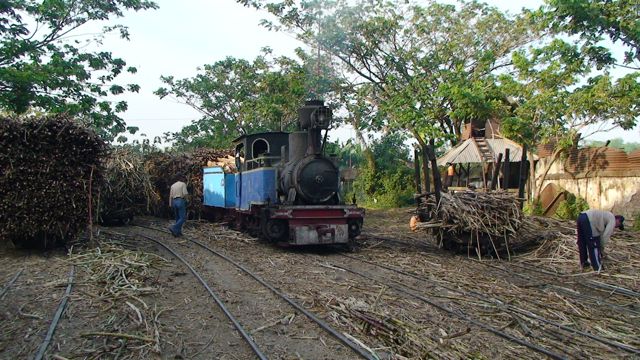
No. 11 doing what it does; pull a rake of cane wagons forward and push it towards the mill gantry where tractor and cable take over.
We then move on to Pagottan and found all 3 fireless in use. A new front and back for an existing boiler seems to have been added on site for these conversions and they all seem to work successfully. In an 8 hour shift, they need to recharge twice at the charging point close to the mill.
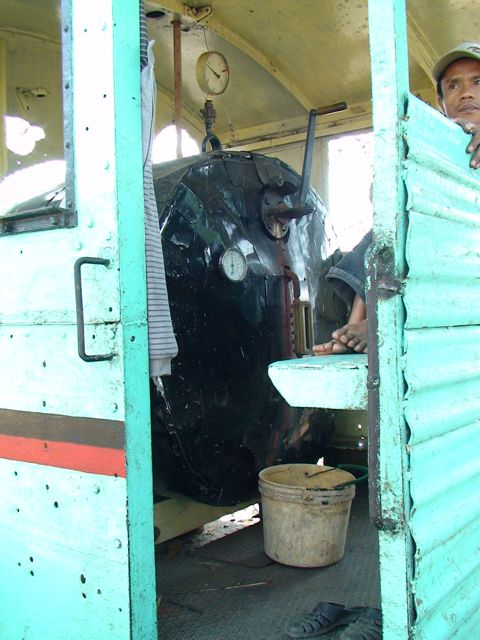
The backplate of the fireless conversion. The firebox has disappeared completely.
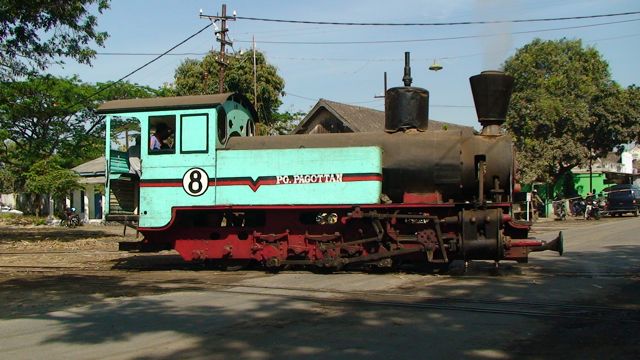
No. 8 is the outside framed version. The front and back axles of the 0-10-0T are geared.
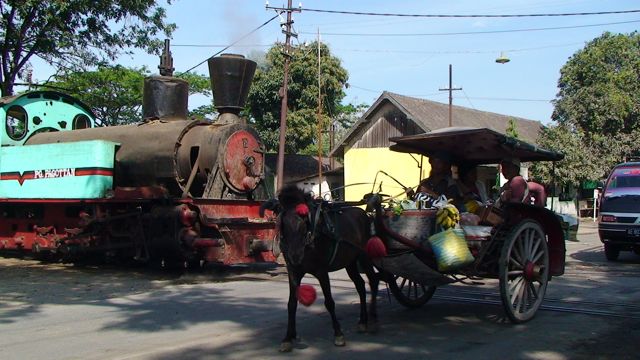
No. 8 waits while a horse cart passes. Bernd had chartered an empty horse cart but this well-ladened real one was much better.
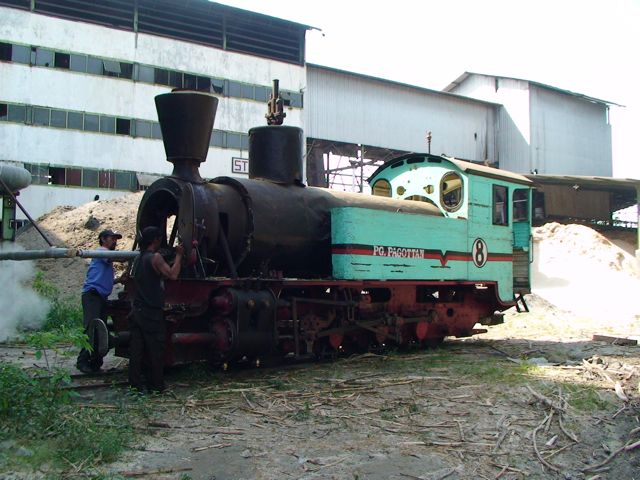
No. 8 being prepared for charging with the pipe already attached.

No. 8 on charge near the mill while No. 6 waits to push another load of fulls.
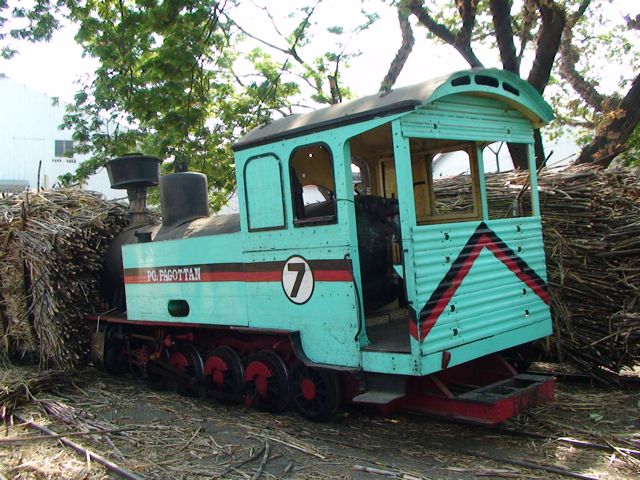
No. 7 is an inside framed loco like No. 6.
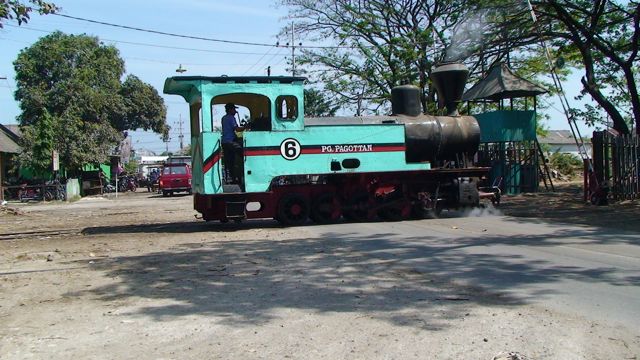
No. 6 on the crossing at the back of the mill. These fireless, along with the two original fireless at Semboro might be the last real steam on Java in a few years' time. But will these conversions prove as durable as the original designs at Semboro?
Despite the real attractions of Salak (the geared loco at Rejosari) it is only a charter on a confined bit of track with lots of gricers running around and I don't get the appeal of 'circus steam'. Anyway, I have been there enough in the past and have decided to take an afternoon off. Bernd expects another steam loco to be working (as normal steam) but I have my doubts. I'll add a note about what they find below later. Madiun is a wi-fi 'not spot' but I eventually found a working internet in the Hotel Merdeka Coffee Shop. (Note after the afternoon group visit: Regosari is normally steam free 'as they don't have enough bagasse' for a steam loco.)
2 August - Before sunrise we’ll go to Purwodadi where
all trains have to pass over a photogenic girder bridge
between the loading point and the yard. Steam and diesel locomotives share
the work. Almost all trains
are banked and offer good photographic potential.
After lunch we’ll continue to Soedhono. After a long break the management
decided to use steam from
2009 again. The first locomotive in use is one of the beautiful inside
frame 0-6-0 tender locomotives.
They want to add a second loco in 2012 but still have no working injector
for this locomotive. The fleet of
diesels is very active at the loading point next to the mill. They’re
using at least four – and none of them
looks alike. In the evening we’ll continue to Cepu where we’ll
stay in the guesthouse of the forestry line or a nice resort.
We arrive around 7:30 to find steam locos No. 5 and 10 working all of the fulls from the truck yard to the mill. A tractor was making up the full trains and a Schoema diesel was operating in the mill yard. No. 10 pulled the locos out of the truck yard and No. 5, waiting in the truck yard, swiftly came on the back. The train stopped on the bridge and after No. 10 had come off, No. 5 propelled the train into the mill yard. We saw 2 of these cycles one-after-the-other and then there was a gap of about 45 minutes before the next.
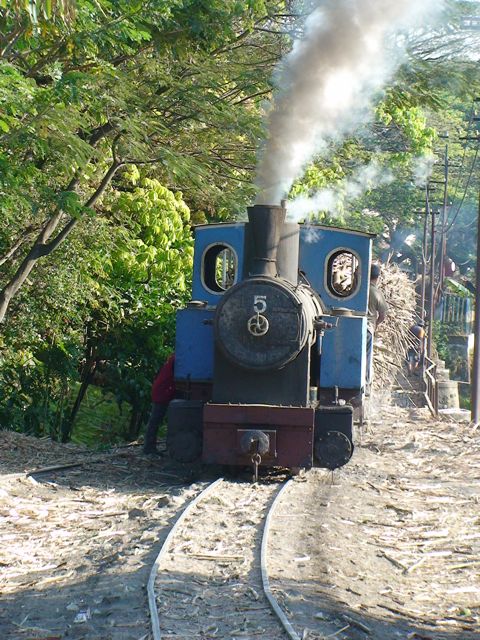
No. 5 waiting to propel the train over the bridge and into the mill yard.

No. 10 ready to haul the train out of the truck yard.
We had lunch in Ngawi and then went back to Soedhono where No. 3 was in steam for us. This loco was restored for the 2009 season (I believe) but is only steamed 'by request' from fee-paying visitors. They have plans to complete the restoration of No. 6 (without its Engerth tender?) as a fireless similar to the Pagottan fireless. The original plan was to restore the loco as a conventional steam loco. No. 3 took its turn along with 2 diesels and a tractor hauling and then pushing cane to the mill and we saw 3 cycles before it was time to go.
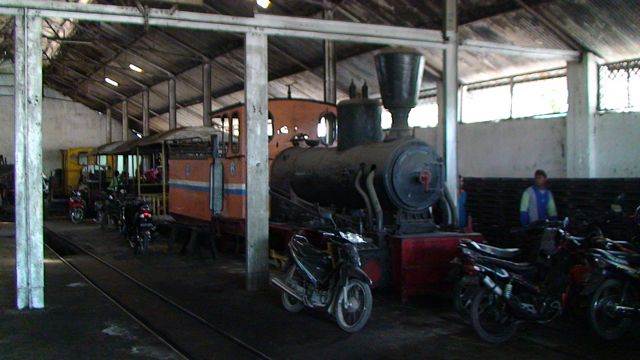
No. 6 'under restoration', the current plan is to convert this to a fireless loco for 2013.
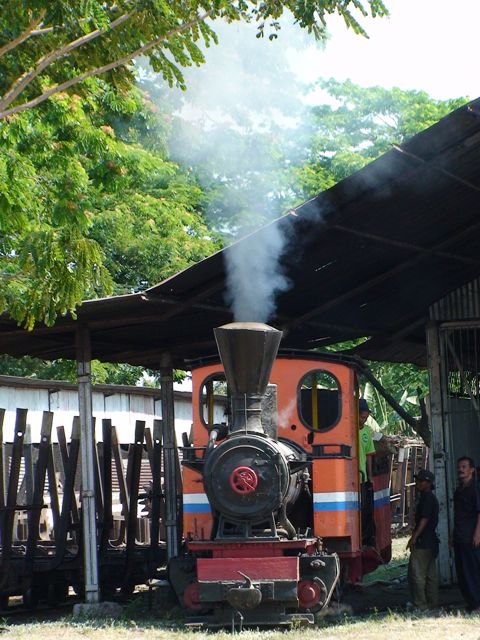
Loco No. 3 raising steam outside the depot.

View of the surrounding fields from the top of a dumped tender near the weighbridge with rice seedlings and a rice paddy being prepared for planting.
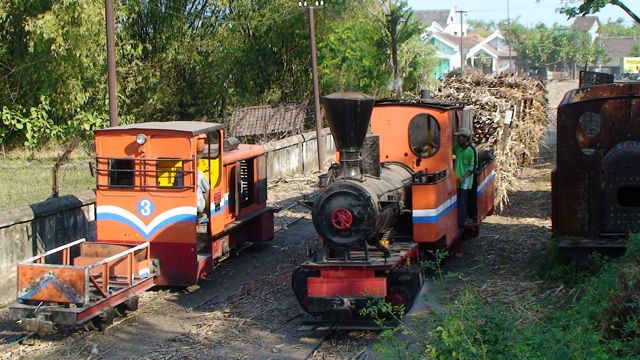
No. 3 passes No. 3 near the weighbridge.
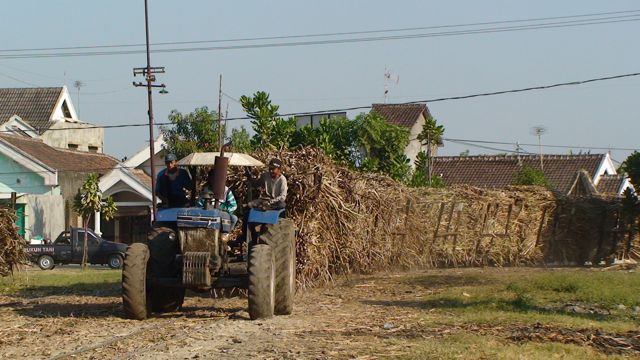
This tractor is hired for Rp1,000,000 for 8 hours which is why the idea of Fireless No. 6 is currently attractive.

Two diesels passing. On the right is Schoema No. 5, I believe.
3 August - Today we’ll enjoy our charter freight train
with one of the massive Schwartzkopf 0-10-0 tank locos on the
cape gauge of the forestry line at Cepu. We’ll take pictures in
the extensive log yard as well as in the
teak plantations. We’ll stay another night in Cepu.
The day started at 6:15 as we headed to the depot at Cepu. There 'Bahargia' was in steam and it hauled out one of the D&B 0-6-0T locos for photography. The Schwarzkopf 0-10-0T then collected a load of 3 loaded teak wagons and we climbed on them to ride tender first to the log yard where the loco ran round. After run pasts in the log yard we headed for the nearby river bridge on the way to the forest where we also took water. The rest of the morning was spent getting to the Blora road bridge with some run pasts. On arrival at 10:30, our buses took us back to the hotel for a rest until 13:30. In the afternoon, we covered the Cepu - Blora PNKA branch line bridge and the high bridge over the stream before heading back to the log yard where the logs were unloaded. Light failed around 16:00 and we made our last run past near the former junction. The loco was in poor mechanical condition knocking and blowing from the right cyclinder and the bearings on some of the wagons were squealing all of the way. The driver was of the opinion that full-open regulator and wheel slip was fine as long the the loco was vaguely slithering forward. We somehow managed to climb all of the grades but on one occasion, the loco was still slipping violently as we were gathering speed backwards. If someone can sort out the necessary loco and wagon maintenance and basic driving skills, this is still a great heritage line and well worth visiting. If they don't, there won't be a train to run for much longer.
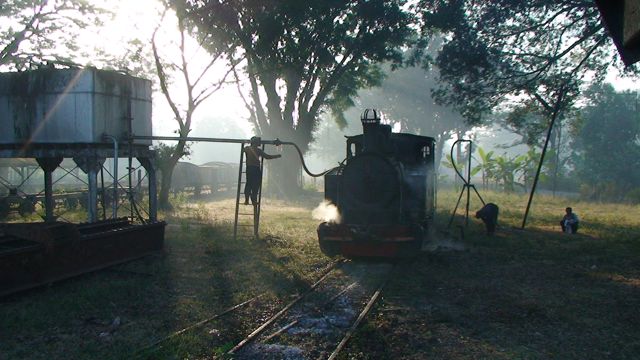
Morning light at the depot as Bahargia takes water.
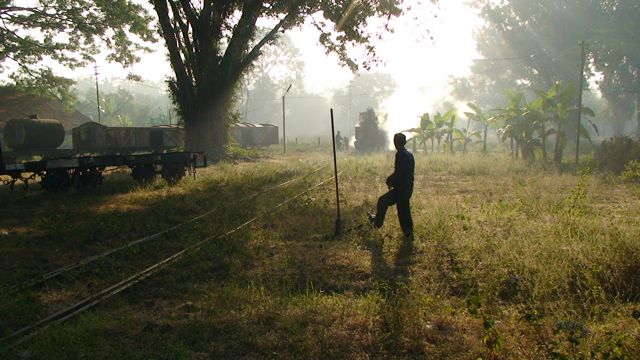
The pointsman holds the points as the loco comes onto its train.
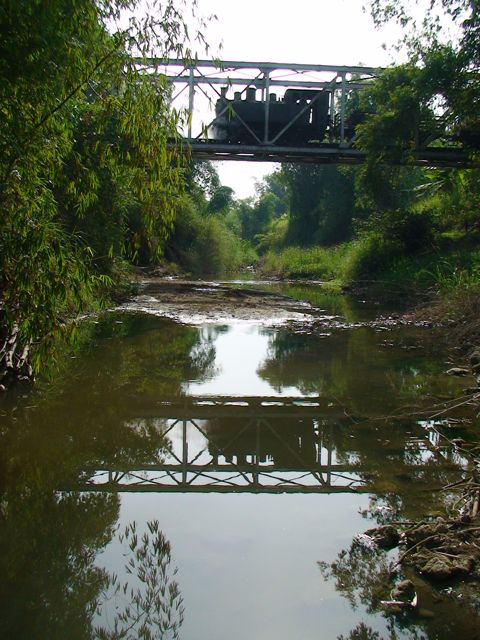
For stills only and as a portrait shot, an 'against the light' silhouette shot on the river bridge.

Local schoolchildren line up for the train.
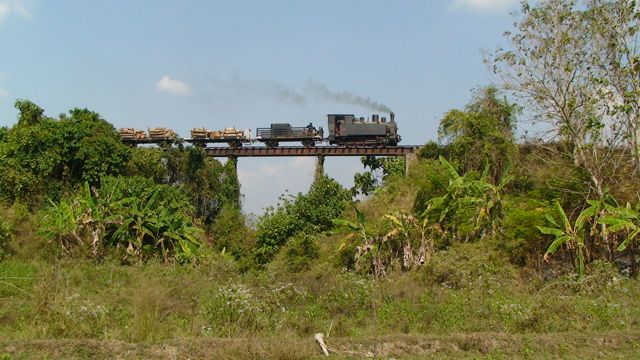
After lunch at the high bridge.
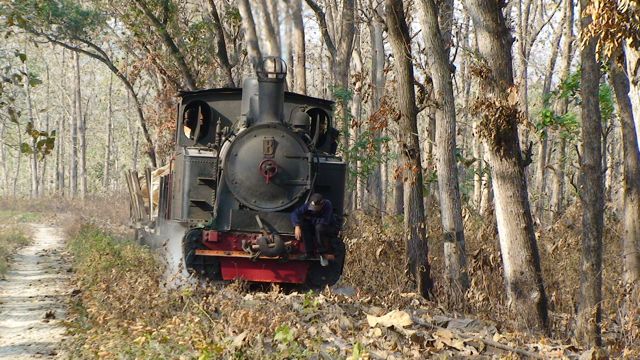
Runpast in the forest near the Blora road bridge.
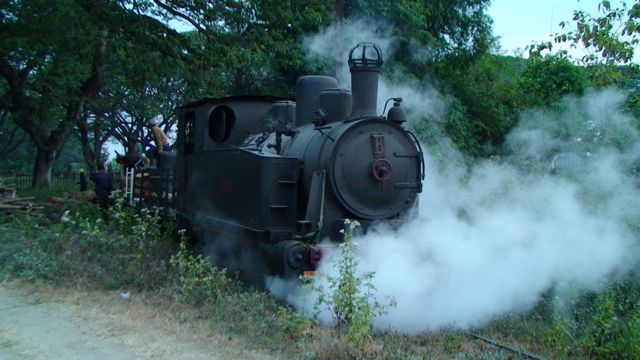
The end of the day in the log yard as the logs are unloaded.
4 August - It will take us about a bit more than three hours
to get to Tasik Madu. The afternoon we’ll spend here
between interesting diesels and steam locomotives. We’ll probably
meet the largest Luttermöller engine
on Java. The impressive 0-10-0, 150 horse power engine has a six axle
tender! In the evening we’ll
witness the sparks the locomotives cause when working hard. Tasik Madu
offers a railway and
agricultural museum. Hotel near Solo.
At Tasik Madu, from the workable fleet of 3 steam locos (5, 5B and 6) only 5(B) was in use along with diesels 6 (VI) and 14. No. 5B (with no B showing but deduced from previous lists) and D14 were shunting the loaded cane towards the mill and DVI was bringing empty lori to the truck unloading gantry. The mill yards were almost completely full of loaded cane lori but there was little or any sign of new cane arriving by truck. Of the steam fleet, big No. 6 is shown as being under repair although it is parked outside the shed dripping water. At the warung, Donny's mum served me a coffee and told me that Donny is now in Jakarta, still working for the telecom company and that he now has a child. She also wondered whether Mr Rob was here.
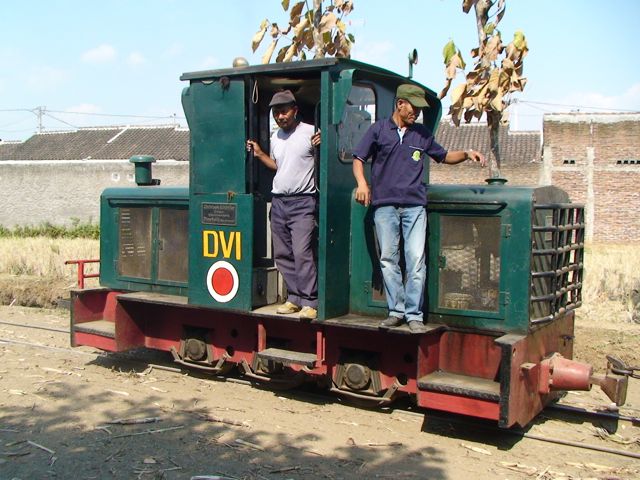
DVI was working the empty lori.
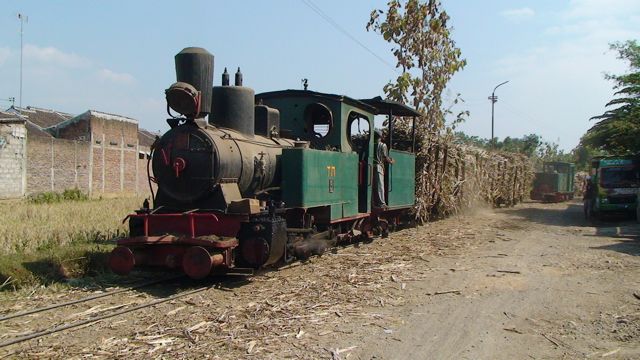
Steam loco 5(B) an O&K loco with D14 in the background.
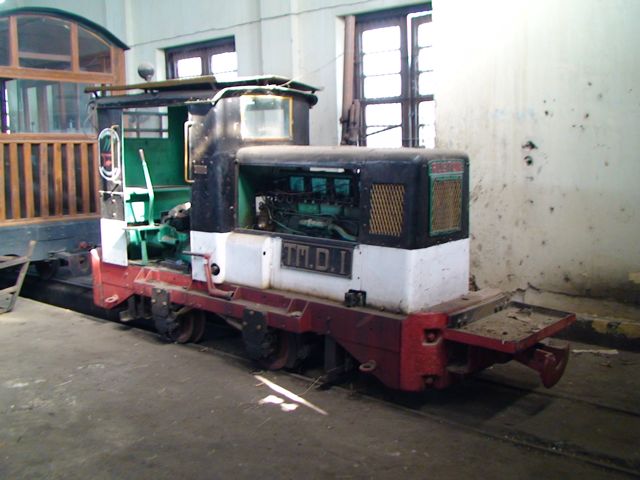
DI (D1) is a Ruston from the 1950s but is not part of the working fleet.
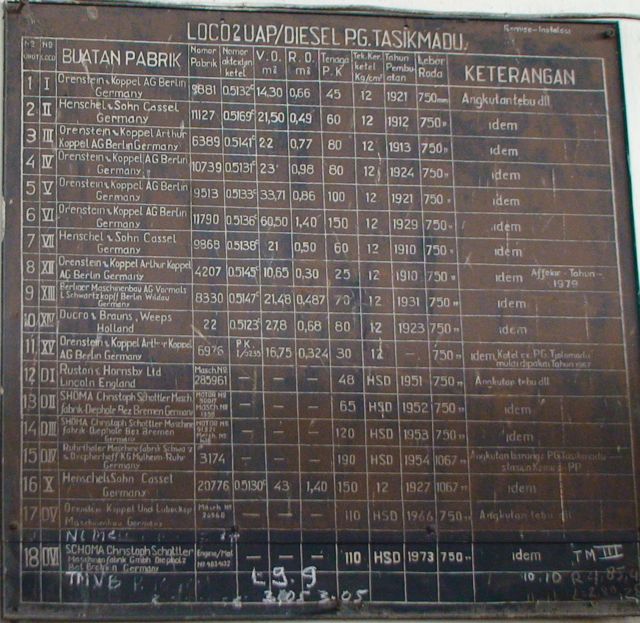
The fleet list on the shed wall.
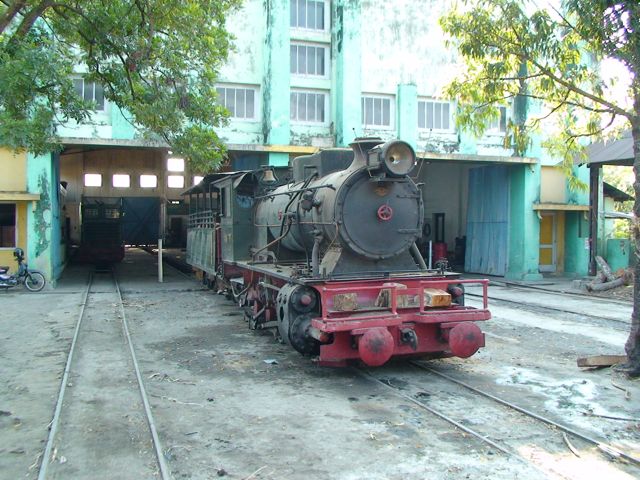
The O&K 0-10-0 tender loco No. 6. If its repair is complete, I imagine Bernd will try to have this working tomorrow morning.
5 August - In the morning we’ll pay Tasik Madu another
brief visit, because the morning light shines on the depot
and the weigh bridge. Around 10am we’ll continue to Yogyakarta were
those who are interested in
culture can visit the Sultan’s palace while the diesel enthusiasts
will continue to the El Dorado of
locomotives of the “Lokomotivebau Karl Marx”, Babelsberg (GDR)
to Madukismo. Madukismo owns all
together 18 LKM-locomotives! In the evening we’ll continue together
to Borobodur.
And so it came to pass, although Bernd didn't have to do anything, that No. 6 was working the next morning when we got there at 7:30. We saw them preparing to fire it last night so it wasn't a surprise. At 10, we left to drive to Yogya with a brief stop outside Gondang Baru (now called Gondang Winangun).
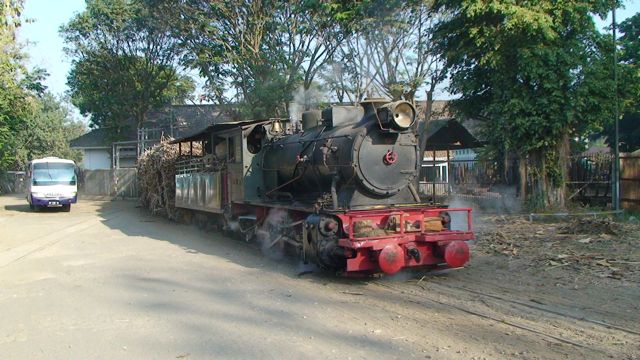
No. 6 in action.

Not much of a job for such an impressive loco now not just the field lines but also the outer truck yard is not in use.

At Gondang Baru, No. 8 is reported to work a tourist train on Sundays and holidays (but not in Ramadan).
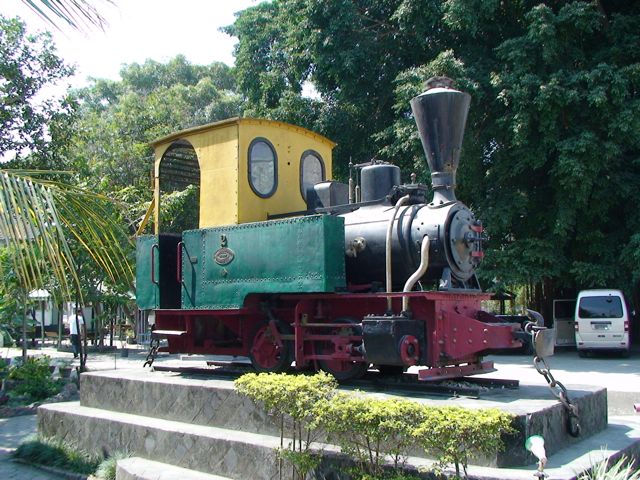
No. 2 is plinthed by the car park.
Madukismo is a modern mill built in 1955 as a replacement for a mill destroyed in the War of Independence. The mill machinery and the 17 750mm diesel locos are all East German although the more modern centrifuges are reported to be British. There were 7 of the 17 identical (well, they started off that way) 3 axle LKM locos in use and the rest were accounted for on depot along with an 0-4-2T loco reported to be from the Cirebon area (possibly a closed mill called Jatitujuh?) in an adjacent shed. It is not currently in working order. The diesels are mainly orange with a few painted yellow.
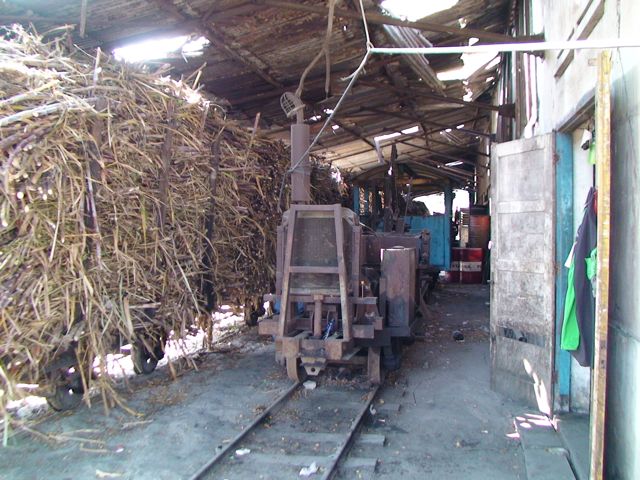
The only non-standard 'loco' was this creature in the PW area which seemed to include a crane.
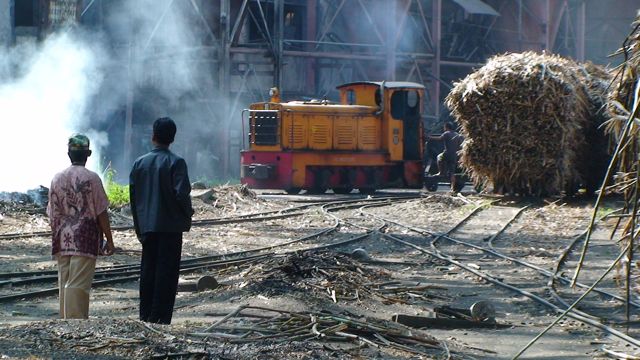
No. 10 was on the ash train hoppers.
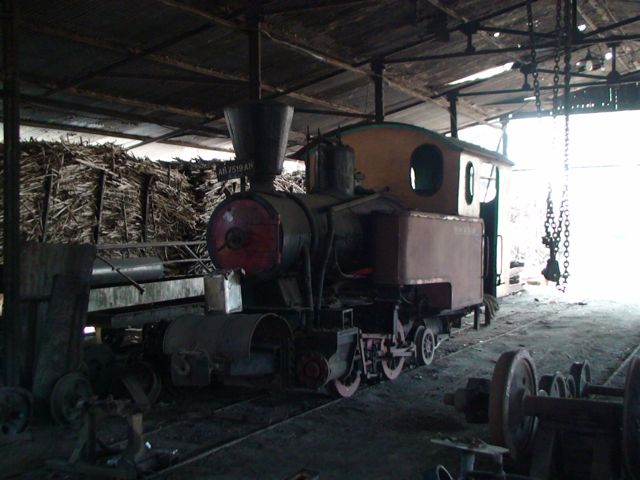
This little 0-4-2T came from Tersana Baru (ex NT12, Borsig 5171 of 1903).
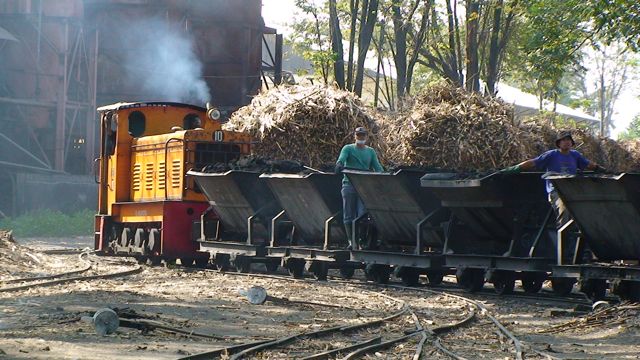
A second shot of No. 10 on the ash train.
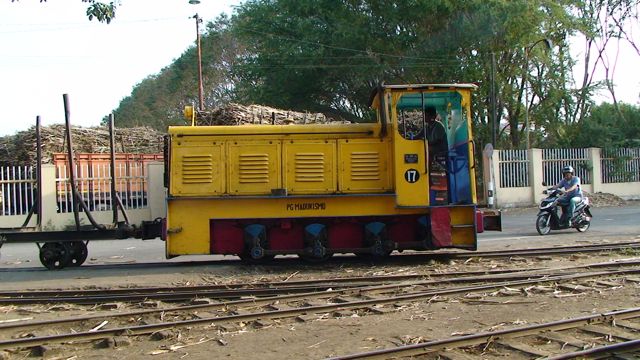
No. 17 was one of the few locos in yellow.

The 1950s technology still included a wagon turntable.
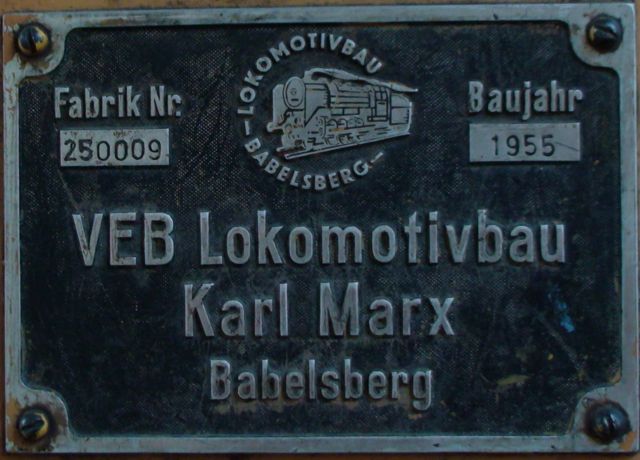
Most of the locos retain their tasty builder's plates but some plates have been switched around so some locos have a mix of plates. This was on No. 7.
As this page is getting rather long. I will put the last 4 days on a different page. Click here for that.
I expect to prepare 2 DVDs of this trip. My current idea is for a Steamy Java 2012 - Part 1 'Mills with diesel field work' and Part 2 'Mills with steam yard and field work'. I will not cover all the mills we visited as some, although of historic interest, have little to point a video camera at. I will also be conscious of operations I have covered well in the past and my interest is more on 'real' operations rather than special charters. Expect only brief covereage of the Cepu Forest Railway and the Ambarawa Rack Railway or possibly these two operations can be a third DVD along with other special trains at the mills. I have footage of the stationary steam engines and sugar production process in Olean Mill which I will include on the 'Mills with steam yard and field work' DVD.
You can contact me at john@linesiding.co.uk